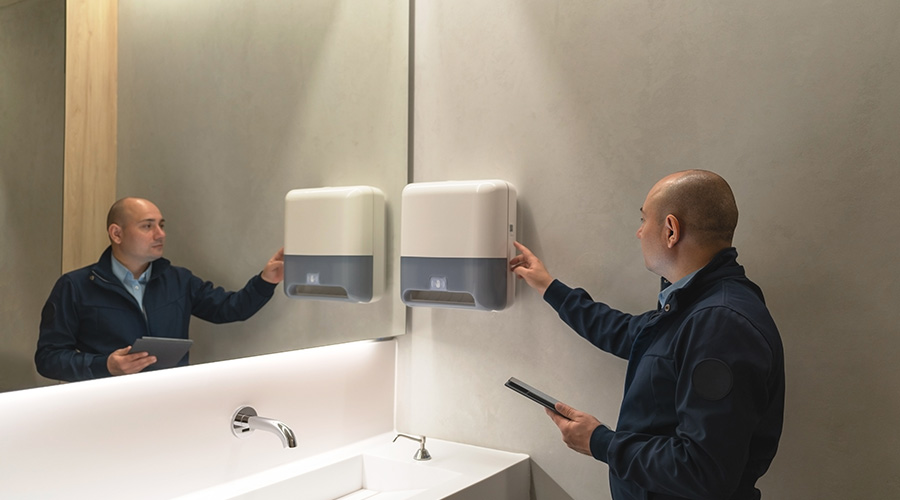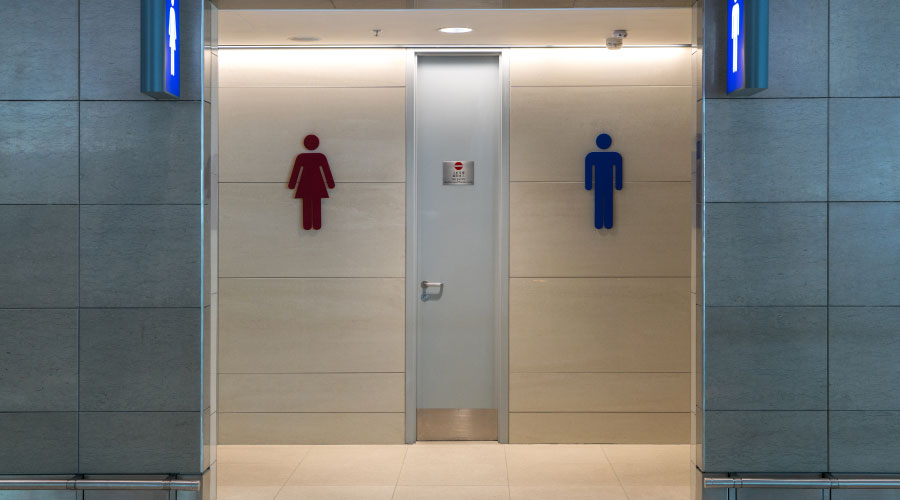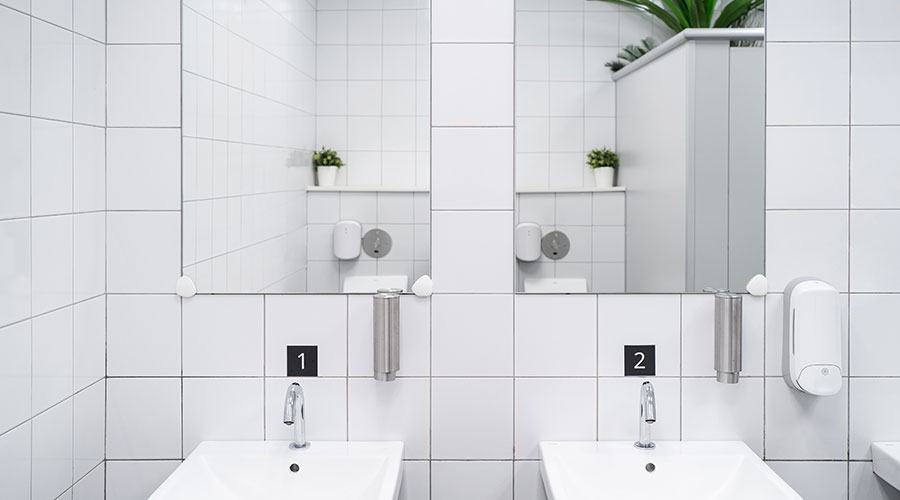Low-Flow Urinals, Toilets and Sinks Reduce Domestic Water Use
Domestic water use accounts for about 40 percent of the water use in most commercial and institutional buildings. Toilets, urinals, and lavatory sinks account for most domestic water use. Water closets and urinals purchased after 1992 have measured their flow rates in gallons per flush (gpf), typically 1.6 gpf.
For units with no flow-rate indicator, managers can assume they are pre-1992 models and use a flow rate of 3.5 gpf. The same goes for urinals. Record the number of each type of fixture and its flow rate for all lavatories in the facility.
For lavatory sinks, managers measure the flow rate using a stopwatch and a container of a known volume. Record the flow rate for each lavatory sink in the facility. Older units should have a flow rate of 2.5 gallons per minute (gpm) or higher, while newer ones should be in the range of 1.5 gpm or less.
The hardest part of quantifying domestic water use is estimating the number of people who use the restroom each day. Managers can make estimates by using a counter on the door to register the number of times each day a user opens the door or by counting the number of people who enter the restroom over a period of time. Neither method is exact, but it provides an indication of use. Managers can use a similar method to estimate the length of time each person uses the lavatory faucet.
Potential water savings will depend on the water use of the replacement fixtures. For water closets, newer-generation models use 1.28 gpf. High-efficiency urinals use as little as 0.125 gpf. New lavatory sink faucets have a flow rate of 0.5 gpm.
Managers can determine the potential for reductions in water use by multiplying the difference between flow rates of the existing and replacement components by the number of users per day and the number of days per year the restroom is in use. Multiplying this number by the cost of the water will provide the annual savings for the retrofit.
Mechanical Matters
While most of the attention in water-conservation programs goes to reductions in the amount of domestic water a facility uses, mechanical systems often offer the highest rate of return for retrofit programs. In a typical commercial or institutional building, mechanical systems account for about 25 percent of total water use when they operate properly. But equipment failures and improper setup can dramatically increase this number.
To determine the potential savings of a retrofit program, managers need to identify each system that regularly uses water, including boilers, cooling towers, and once-through refrigeration-cooling systems. For each system, managers need to measure the water used by the system.
For cooling towers, technicians need to bleed off water at a certain rate to prevent the level of suspended solids from exceeding the manufacturer's recommended level. They also must add water to the system to replace water lost from drift from the tower.
Ideally, the system monitors losses and solids and bleeds off the correct amount of water. But in practice, that rarely happens. Bleed rates are typically set too high, or the makeup valve malfunctions, and too much water is added to the tower basin. The result is higher water use by the system.
Boilers also require bleeding off water to prevent the accumulation of solids. A bleed rate that is too high results in wasted water.
For both systems, technicians need to inspect the operation of the makeup and bleed systems, looking for obvious equipment failures. Test the water in both systems, and measure the rate at which water is added. If water rates can be reduced — particularly by adding automated monitoring systems — technicians can determine the amount of water the changes can save in a season.
For refrigeration systems with once-through cooling systems, technicians can identify the equipment the systems serve and the capacity of the systems installed. For each, they can measure the flow rate through the cooling system and determine the amount of time the flow occurs to estimate potential water savings. Even when these systems operate properly, they use large amounts of water. Malfunctions, such as valves that fail to close when water is not needed, make matters even worse.
Related Topics:













